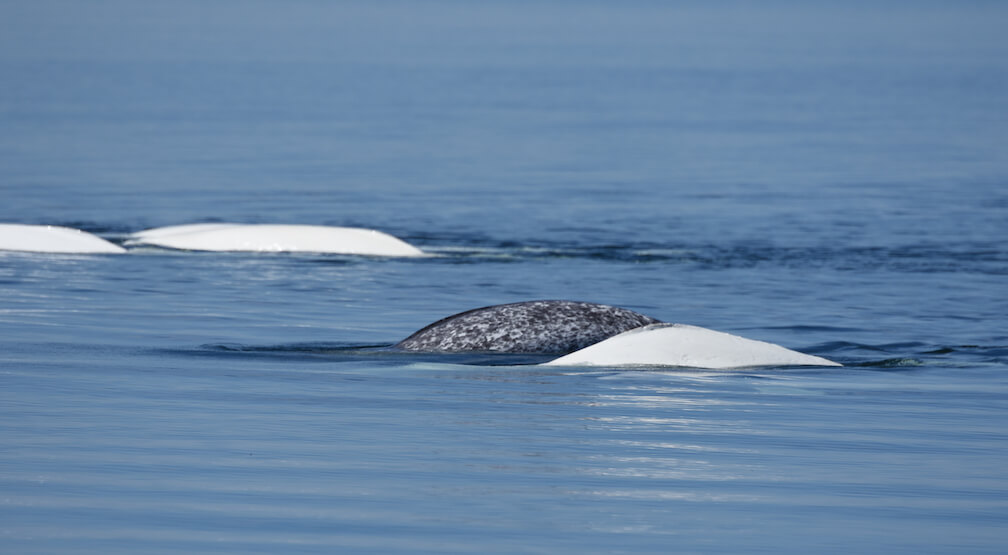he narwhal and the beluga are the only two species in the family Monodontidae, a suborder of toothedwhales. These two species inhabit arctic and subarctic regions and have a circumpolar distribution, meaning they are found all around the North Pole. Being closely related, belugas and narwhals share certain characteristic traits such as the absence of a dorsal fin on their back. Instead, they have a dorsal ridge, which may be an adaptation to life in cold water. In fact, in most cetaceans, the blubber-less dorsal fin is known to be used to evacuate heat. In Monodontidae species, the smaller and stronger dorsal ridge is believed to be used notably to break through the ice in order to reach the surface.
Measuring between 3.95 m and 5.5 m, adult narwhals are about the same size as belugas. Additionally, males feature a long protruding tooth, which can add up to 3 m!
As with belugas, narwhals’ colouring changes over time. The skin turns paler with age and the speckled spots on the back change over time.
Both belugas and narwhals are gregarious and highly social, meaning they are most often seen in groups. For these two species, females experience menopause and grandmothers are believed to play a role in caring for young and transferring knowledge.
Despite their similarities and overlapping ranges, narwhals and belugas are not typically seen together. Researcher Marianne Marcoux, narwhal specialist at Fisheries and Oceans Canada says: “I once observed a beluga swimming amongst a group of narwhals in Eclipse Sound (Translator’s note: now known as Tasiujaq).Belugas and narwhals have been seen together during their spring migration in Navy Board Inlet, but these encounters are believed to be of short duration. One of the few places in Canada where the respective ranges of narwhals and belugas overlap is in northwest Hudson Bay. Narwhals and belugas share the same waters, but don’t necessarily intermingle.” Thus, the two species are not frequently seen together.


